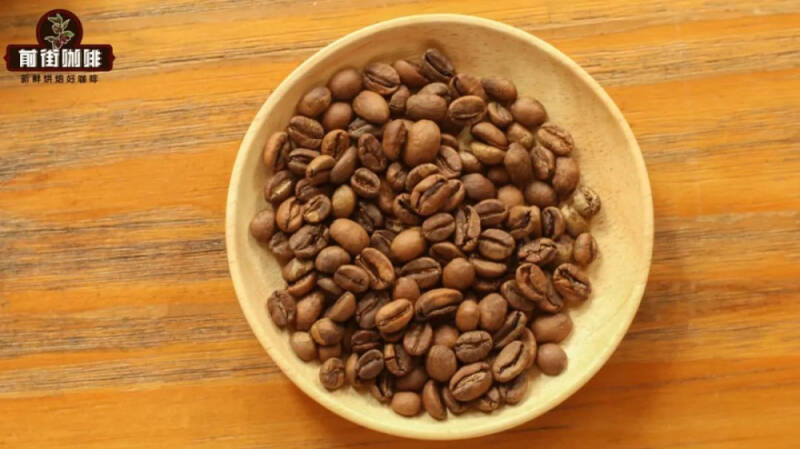How many coffee beans do you need to make coffee by hand? Can I make a cup of powder under 15 grams?

In many cases, a bag of beans does not allow you to fully apply it to cooking. For example: a packet of 100g beans, 15.5g is the amount needed for one cooking, 15g is used for cooking, 0.5g is used for washing and grinding, then this packet of 100g beans can be boiled six times, a total of 93g, and there will be 7 grams of beans left.

This is an analogy, in fact, the remaining beans may be more or less than it, but it is certain that it is not satisfied with the amount we usually need to make a pot. Then here comes the problem! How do you use these beans that are less than once boiled? You might as well take a look at what Qianjie will do.
First, directly charge it when the remaining stock of beans is about 10g, Qianjie will directly cook it, because this is just good for the lower limit of No. 01 filter cup. However, too little powder will lead to a decrease in the thickness of the powder bed and increase the speed of water seepage, so if we want to make a pot of coffee with a suitable taste, we need to adjust the brewing method.
Qianjie does this: the ratio of powder to water remains the same, and the extraction efficiency reduced due to excessive flow rate is corrected by fine grinding; small water flow is used during cooking, and water is injected slowly, which can prolong the extraction time and make the extraction more complete.
When one bean has less than one bubble to cook, and we have another bean in hand, we can match it. Add the beans to the amount that can be boiled in a pot, which is the most common thing in Qianjie!
However, matching is fastidious. If two completely mismatched beans are put together, the final coffee taste may be unimaginably terrible! (for example, a pot of Mantenin roses made by colleagues in the front street in the morning.) therefore, in order not to waste the beans bought at a high price, and to be able to piece together good coffee, Qianjie suggests that when blending, refer to the following logic and then mix the coffee beans.
The degree of baking is similar: I believe we all know that different degrees of baking will give beans different "physique". Shallow-baked beans are hard and need "tough" extraction efficiency; deep-baked beans are loose and need "soft" extraction efficiency. When these two kinds of beans with very different needs are pieced together, it is difficult to have a suitable extraction parameter to extract them perfectly.
Therefore, the prerequisite for matching is that the baking degree is similar. And when we have two similar baked beans, put them together, the different flavors between them may blend into an unexpected amazing flavor.
Making furnishings in yesterday's article Qianjie mentioned that there are more than 130 different species of coffee, and these species will have very many different species. They come in different shapes and sizes. Therefore, if you are a heavy lover of coffee, you can make the remaining coffee beans as specimens and collect them!
Making a specimen is not as difficult as we think. As long as the coffee bean as a collection does not produce oil, then only a clean and transparent sealed vial is needed to keep it in storage for a long time, and there will be no corruption.
Or it can be made into some beautiful coffee furnishings with a short storage time! For example, in recent years, coffee beans Christmas trees, coffee bean decorations and so on, they can not only provide visual experience, but also absorb the strange smell in the space, which is very good.
So, what would you do with less than a bubble of coffee beans?
-END-
Front Street Cafe
No. 10 Baoqian street, Yandun road, Dongshankou, Yuexiu district, Guangzhou, Guangdong province
Important Notice :
前街咖啡 FrontStreet Coffee has moved to new addredd:
FrontStreet Coffee Address: 315,Donghua East Road,GuangZhou
Tel:020 38364473
- Prev

Is there a big difference between G1 and G2 Ethiopian single coffee beans?
Coffee beans belong to agricultural products, agricultural products can not be as uniform as industrial products, there are many factors can affect the quality of coffee beans. In order to avoid mixing good and bad, it is necessary to classify the quality of coffee beans by grading. At the same time, the grade identification can also provide a certain amount of raw beans to the soybean merchants when purchasing raw beans.
- Next

Breaking into the embassy! Ecuador's armed conflict, diplomatic turmoil affecting coffee and tourism industries
Recently, the Chinese Embassy in Ecuador issued a notice saying that the security situation in Ecuador has been grim again recently, with frequent violent crimes in coastal areas, resulting in many casualties. Chinese citizens and institutions are reminded to pay attention to personal and property safety, raise awareness of self-prevention, travel carefully to the coastal areas of Ecuador and avoid
Related
- Being chased out of the rain in front of Starbucks?! Store: Sheltering from rain under umbrellas poses a safety hazard
- The white moonlight has changed?! Lucky launches "Big Winter Pear American"
- Hand-brewed coffee three-stage method, high-sweet and universal brewing method to share! What does the high sweet water level of hand-brewed coffee mean?
- What is the difference between raw, refined and full espresso coffee? How to extract espresso and taste good?
- A complete list of coffee bean names and their meanings! What is Yejia Shefi coffee? Where is Mantelin coffee?
- What grade does Arida Manor Kaduai coffee beans belong to? What treatment is Arida ASD slow anaerobic sun exposure?
- The milk tea cup becomes smaller?! Overlord Tea Girl launches a new "Return to Yunnan" series
- Accused of selling counterfeit and high-priced coffee beans! Well-known boutique coffee brand "Oukelao" bowed and apologized!
- How to make espresso dumplings? Can I eat coffee and glutinous rice balls together?
- Save the unformed and stagnant powder cakes in one second! What is the problem with stagnant water in the powder bowl of the espresso machine?

